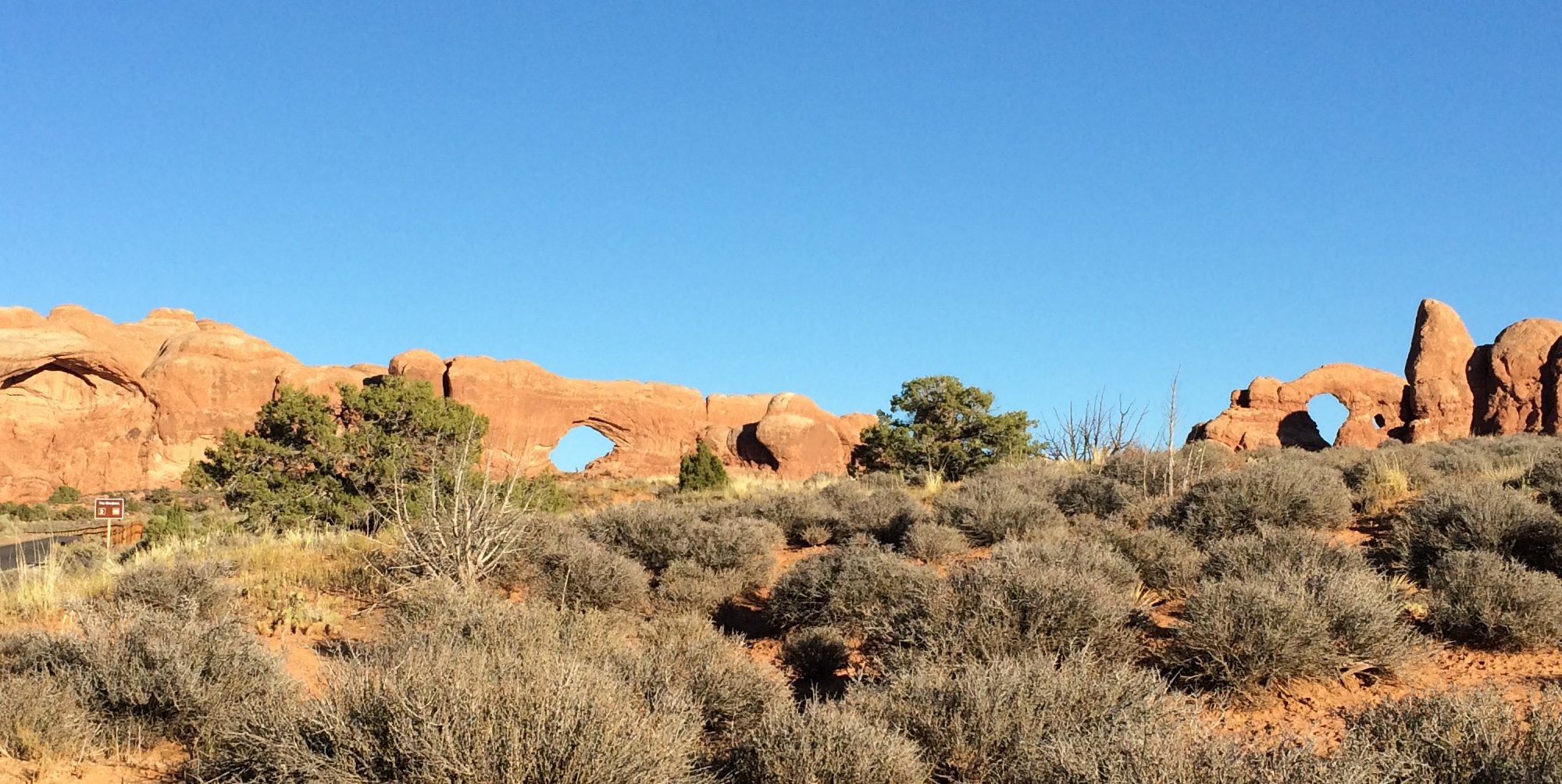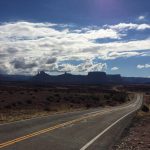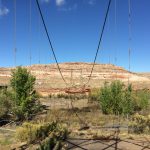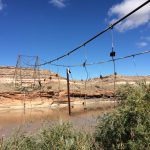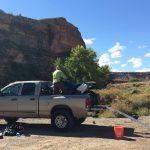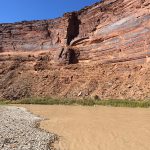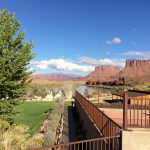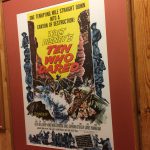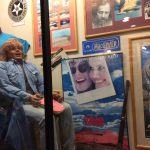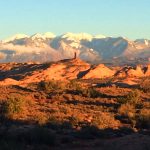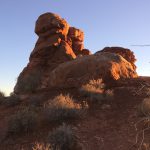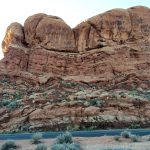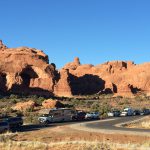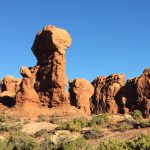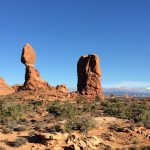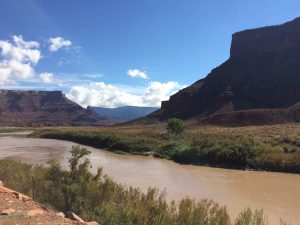
The first great tip I got from the proprietor at the Ballard RV Park was to try going through Professor Valley. Instead of going back West to Route 191 to reach Arches National Park, you continue to the East and take Route 128 South. It’s a narrow twisty road not good for RVs or big trucks, but that also makes it great for scenery. This “back door” to the park takes you along the Colorado River through Professor Valley, one of the most picturesque areas around. Best of all the road is rarely traveled by tourists except for at the southernmost end near Moab.
Professor Valley
I learned that Utah Route 128 is a recognized Scenic Byway, and gives access not only to the Colorado, but also the remains of the historic Dewey Bridge and some notable movie locations used in a wide variety of pictures, from classic cowboy movies to post-apocalyptic action flicks. The scenery is spectacular indeed, and the fact that you often have it all to yourself makes the experience that much more enjoyable.
While stopped to examine the remnants of the Dewey Bridge, I encountered a guy struggling to load a pair of dirt bikes into the back of his pickup. He had been out trail riding with his adolescent son and seemed to being having trouble loading them alone as the boy was too young to be of much help.
When I offered to lend a hand he said he could handle it (of course), but when the motorcycle was half way up, the ramp kicked out, the plastic bucket he was standing on collapsed and both he and the bike came tumbling down. Bringing a more solid step from my own truck to provide a better platform, the two of us were able to get both bikes loaded.
Continuing South along the river, there were myriad places to pull over and take pictures. The Colorado was muddy from recent rain upstream, but it was still beautiful country and I found lots of interesting rocks including rose quartz, often an indicator of gold deposits in the area.
Red Cliffs Lodge
Continuing South, you pass dramatic formations like the Fisher Towers, The Titan and Parriott Mesa as well as several intriguing BLM roads and Federal campgrounds for dry camping. Just past the Castle Valley turnoff you’ll find Red Cliffs Lodge. It’s a gem of a place perfectly situated at a bend in the river, affording terrific views in every direction from their large deck. A lot of guests stay here to take horseback rides along the Colorado, but you don’t have to be staying at the lodge to make use of the stables, restaurant or check out the free museum dedicated to the history of movie making in the Moab area.
If you come to Moab to visit the National Parks without a camper, I would highly recommend looking at Red Cliffs Lodge as a potential place to stay. It was good enough for John Wayne, so I think you’ll be happy with it too.
Not too far beyond the Lodge, the highway follows the Eastern border of Arches. Near Icebox Canyon and paralleling the road past Goose Island the park service has developed a highly impressive network of bicycle trails. Mountain bikes have been banned from the regular hiking trails in the National Parks, so this area really concentrates the visiting pedal pushers. The paths are wide and paved though, so it appears to accommodate the traffic without much problem.
Arches National Park
Even great roads must eventually end, and Route 128 terminates at 191 just between the entrance to Arches and the Moab city limits. Perfect if you’re staying at Thompson Springs or somewhere in Professor Valley, because you can enter the park without fighting the congestion in town. That didn’t save me entirely though, because my host filled me in that I had arrived at peak season for the region – hence the “no room at the inn” experience in Moab upon my arrival.
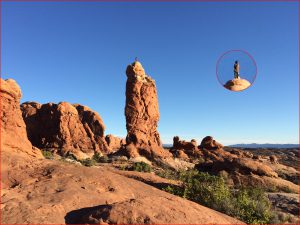
Reports were that in the mornings it was taking as much as three hours wait to get into Arches, which is why I timed my arrival for late in the day when folks had worn themselves out and returned to their hotels. Even so, the park had a lot of other people on the single entrance road, and most of the parking areas were filled. It was one of those times I was glad I was in a 4×4 truck instead of a sedan so I could park in the sand on the roadside.
There was plenty to see at Arches, but frankly many of the most popular sights had gobs of people swarming about. That sort of stifles the experience for me, making it feel more like a trip to a theme park than a wilderness adventure. The famous photo op is Delicate Arch, the road to which had been washed out by the recent rains. That left the only access a three mile trail crossing areas of smooth, bare rock. With only 40 minutes before sunset, I chose not to try it, though I watched dozens of people heading up the trail with no flashlights, water or warm coats, many with children in tow.
The Boy Scout in me clucked in wonderment, but it did explain why the staff at Arches National Park has to put up signs like these in all the restrooms:
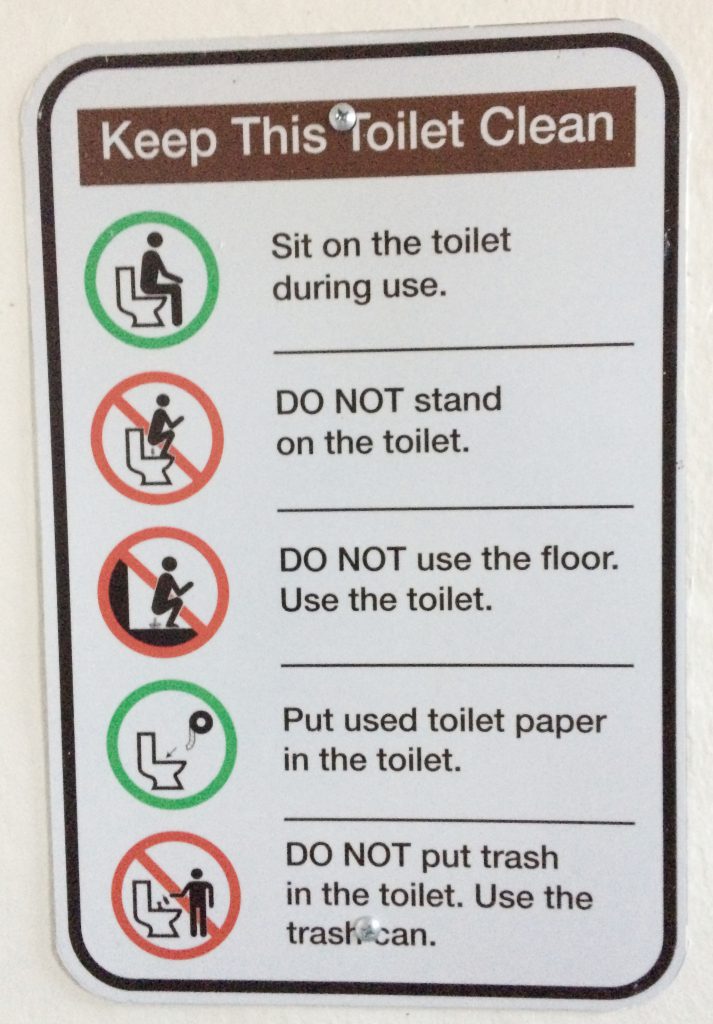
Next time: camp cooking and Canyonlands National Park
